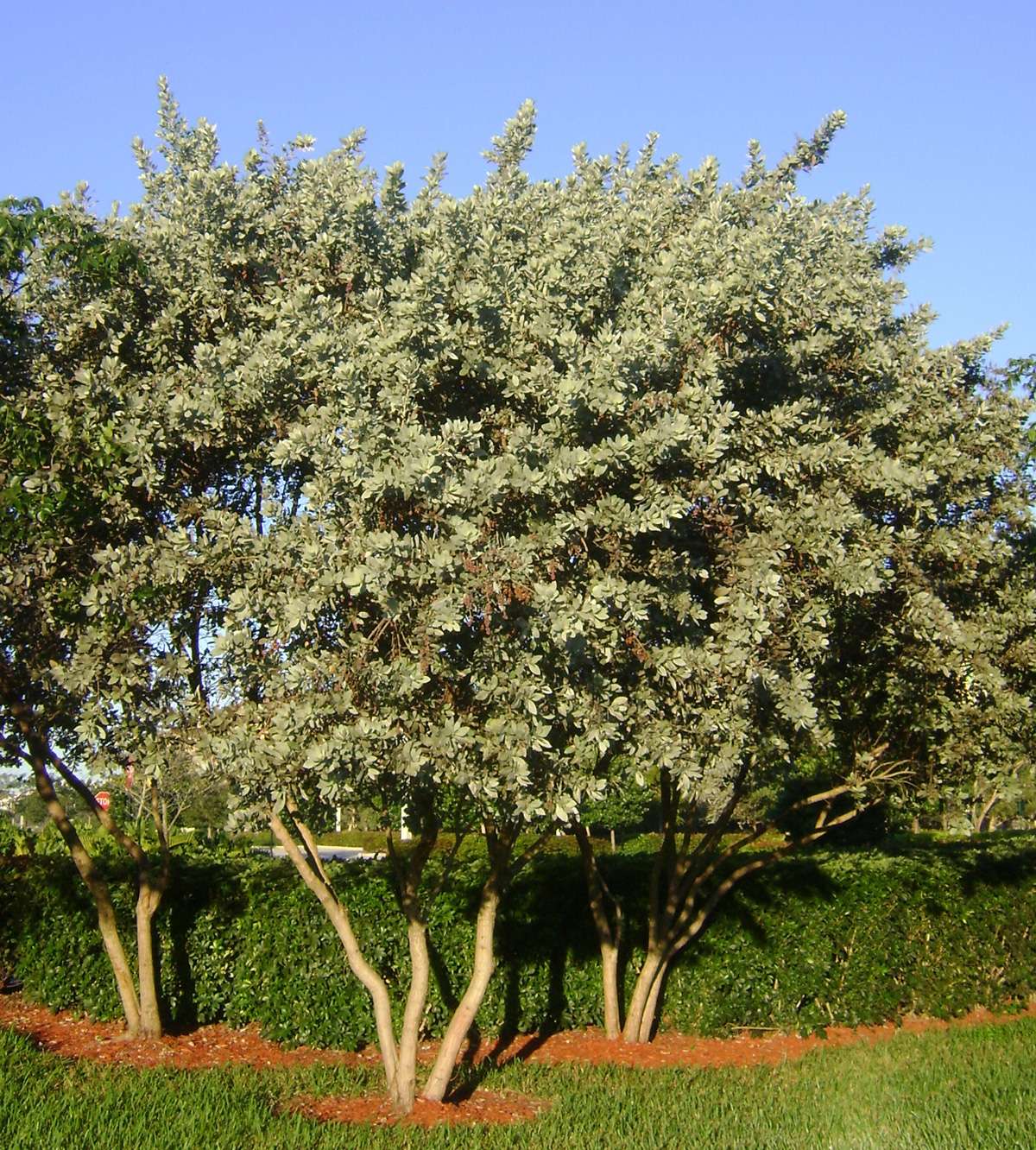Popular throughout coastal Florida, the silver buttonwood is instantly recognizable by its unusual appearance. This striking and versatile tree adds contrast to uniformly green Miami landscapes. Although often planted as a multi-trunked ornamental shrub, the dark brown, ridged bark and silvery to blue-green foliage of the silver buttonwood make it equally attractive as a specimen tree. The small, oblong leaves are covered with a network of fine hairs that gives them their shimmering appearance. The inconspicuous flowers are white, yellow or pale green and appear on cone-shaped panicles in the spring. They later mature into clusters of small, button-like reddish brown fruits. Cultivated as a tree, the silver buttonwood can grow to a height of 50 feet.
This Florida native is one tough customer. The hardy silver buttonwood flourishes in almost any frost-free environment. It grows successfully in both clay and sand and doesn’t mind acidic or alkaline soils. Drought resistant, it can also withstand boggy conditions. It thrives in full sun and can accept broken shade. Popular near the shore because of its salt tolerance, the silver buttonwood does equally well in urban conditions, and can be planted near busy streets or in containers on patios or balconies. Trees or shrubs require little routine care, and since the silver buttonwood is an evergreen, leaf litter isn’t a problem.
Plant the silver buttonwood as a decorative shrub or in flowerbeds and boxes as an accent plant. Cultivate in rows to create a natural wind or privacy screen, or prune into a clipped hedge. Use silver buttonwood as a hardy and low-maintenance parkway or lawn tree. In sheltered environments, the silver buttonwood has an upright, vase-shaped crown that widens at the peak. When planted near the ocean, the action of frequent sea breezes and salt spray can sculpt the trunk and branches into striking, architectural shapes.

